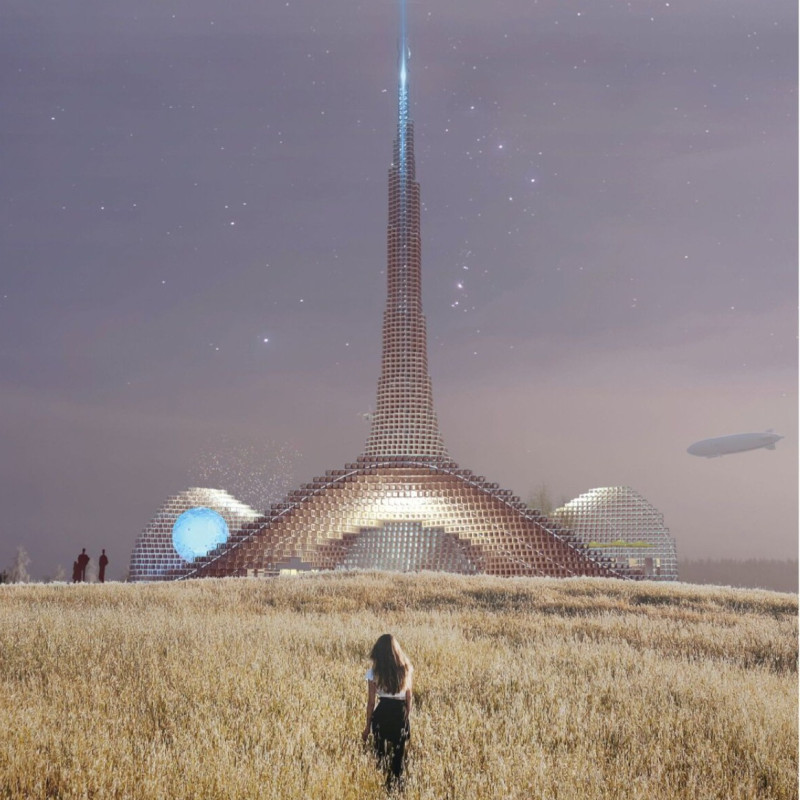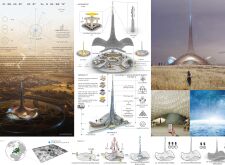5 key facts about this project
The design manifests as a helical, organic structure that spirals upward, symbolizing a connection between the earth and the cosmos. This upward motion represents aspiration and growth while creating a visually appealing silhouette on the landscape. The architecture is not merely aesthetic; it serves vital community functions, including galleries, performance spaces, and workshops dedicated to cultural and social engagement. The incorporation of diverse programmatic elements encourages interaction and fosters a sense of belonging among visitors.
Materiality is a crucial aspect of the design, with a strong emphasis on sustainable choices. The use of wood is evident throughout the structure, providing a renewable and warm tactile quality to the building. This choice reflects a commitment to environmental responsibility while adding to the beauty of the space. Gold accents are integrated into the upper parts of the design, contributing symbolic value by representing purity and connection to the skies. The extensive use of glass not only enhances transparency but also ensures that daylight floods the interior spaces, fostering a vibrant atmosphere conducive to creativity and contemplation.
The design thoughtfully considers environmental integration, incorporating solar panels and water collection systems for sustainability. These elements align seamlessly with the architectural concept of lasting harmony with nature. Furthermore, the "Tree of Life," a unique feature in the landscape design, enhances the site’s ecological framework, promoting biodiversity while providing an inviting element for visitors.
Circulation within the structure is designed to facilitate ease of movement and accessibility to all spaces. Visitors are guided through an intuitive layout that encourages exploration and engagement without feeling overwhelming. Communal areas such as cafes and open performance spaces are designed to be gathering points, promoting social interactions and cultural exchange.
Unique design approaches within this project include the seamless blend of sacred geometry with contemporary architectural practices. The incorporation of the "Seed of Life" geometric pattern resonates deeply with the themes of human existence and connectivity. This design emphasizes not just the visual impact but the underlying philosophical and emotional narrative that accompanies the architecture.
Potential visitors and those interested in architectural design will find that the "Crop of Light" provides exceptional insights into modern architectural ideas and community-focused design. By studying the architectural plans, sections, and overall design strategies, one can appreciate how the project integrates both form and function, while promoting sustainability and enriching cultural interactions. The architectural elements within this project encourage a deeper understanding of the role that thoughtful design plays in shaping human experiences and fostering community connections. For those looking for more detailed insights into the project's nuances, reviewing the extensive design documentation is highly recommended.























